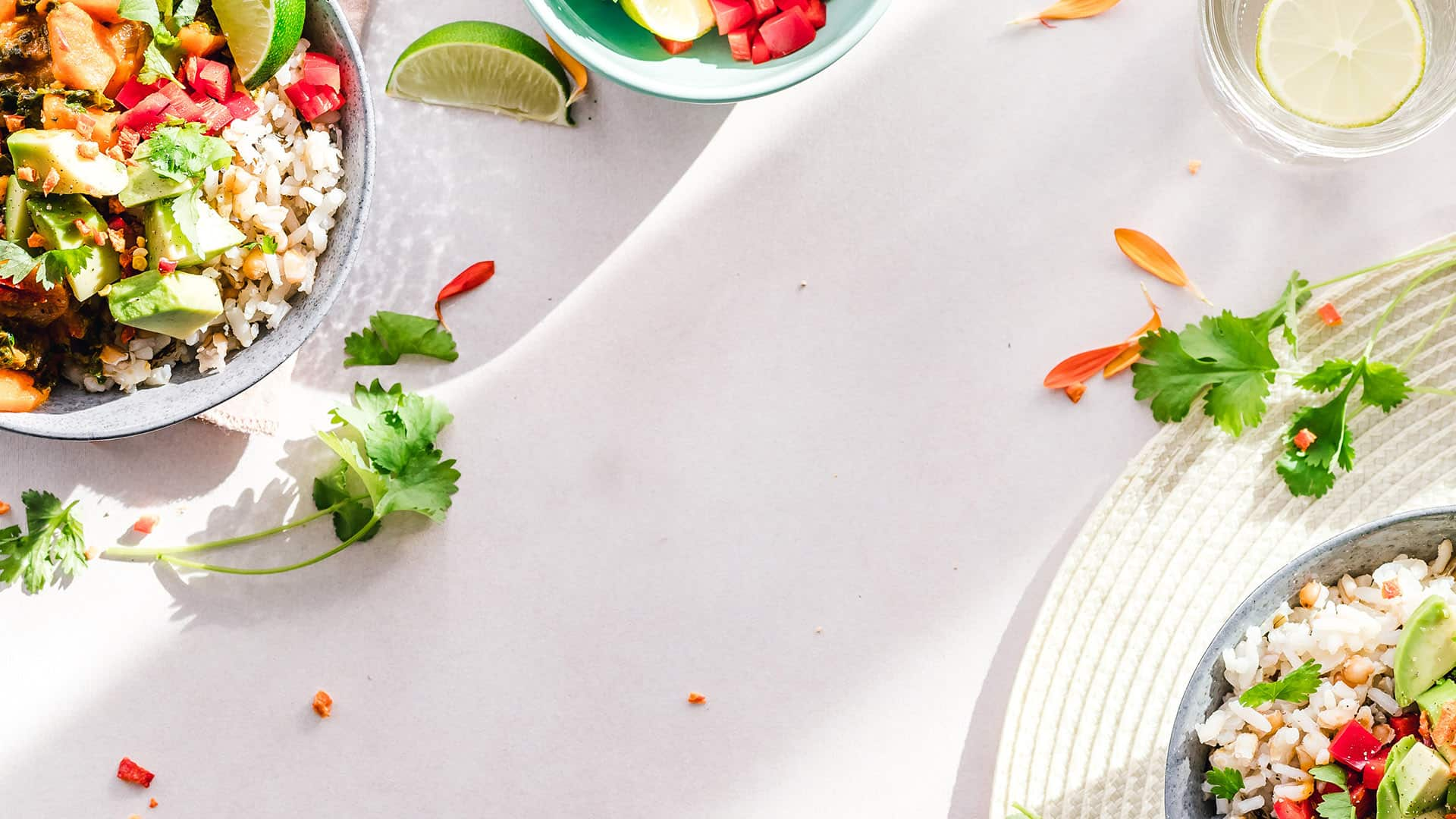

Ones to Watch: A taste of the future
Collaborations between food scientists, manufacturers, and biotech firms are driving the development of novel ingredients, setting the stage for a new era in food production that prioritizes sustainability, nutrition, and operational excellence. John Challen highlights 10 examples that have the potential to be a fixture in tomorrow’s world
In any recipe, the right (or wrong) ingredients can make all the difference. Too much of something in a dish or not enough and the results can be a culinary catastrophe. When it comes to novel or innovative items, such as new proteins, there is sometimes less emphasis on the final product and more on where the individual elements have come from and how they have been created. As such, the plant-based market is awash with innovations in everything from methane and peas to fungi and potato.
Researchers, scientists and specialists in food and food production are all vying to increase the amount of these ingredients into general consumption around the world. Not only have the nutritional benefits been proven to go above and beyond traditional proteins, there are further environmental benefits, too. Reduced reliance on land and water are a major boost to sustainability, while many of the waste products that would typically be discarded are being re-used to good effect elsewhere within the food chain.
Challenges accepted
In some cases, there will be big hurdles to overcome, whether price parity with traditional foods, regulatory approvals, or consumer acceptance. But the huge potential this new generation of ingredients has to offer should be enough to overcome such barriers to entry to the market. Collaboration is also key to success and start-ups are relying on and seeking out partnerships and arrangements with those already in the industry, governments, and companies involved in protein production to give themselves the best chance of survival.
Here, we bring you 10 more promising ingredients that could become a byword as we enter this new food era…
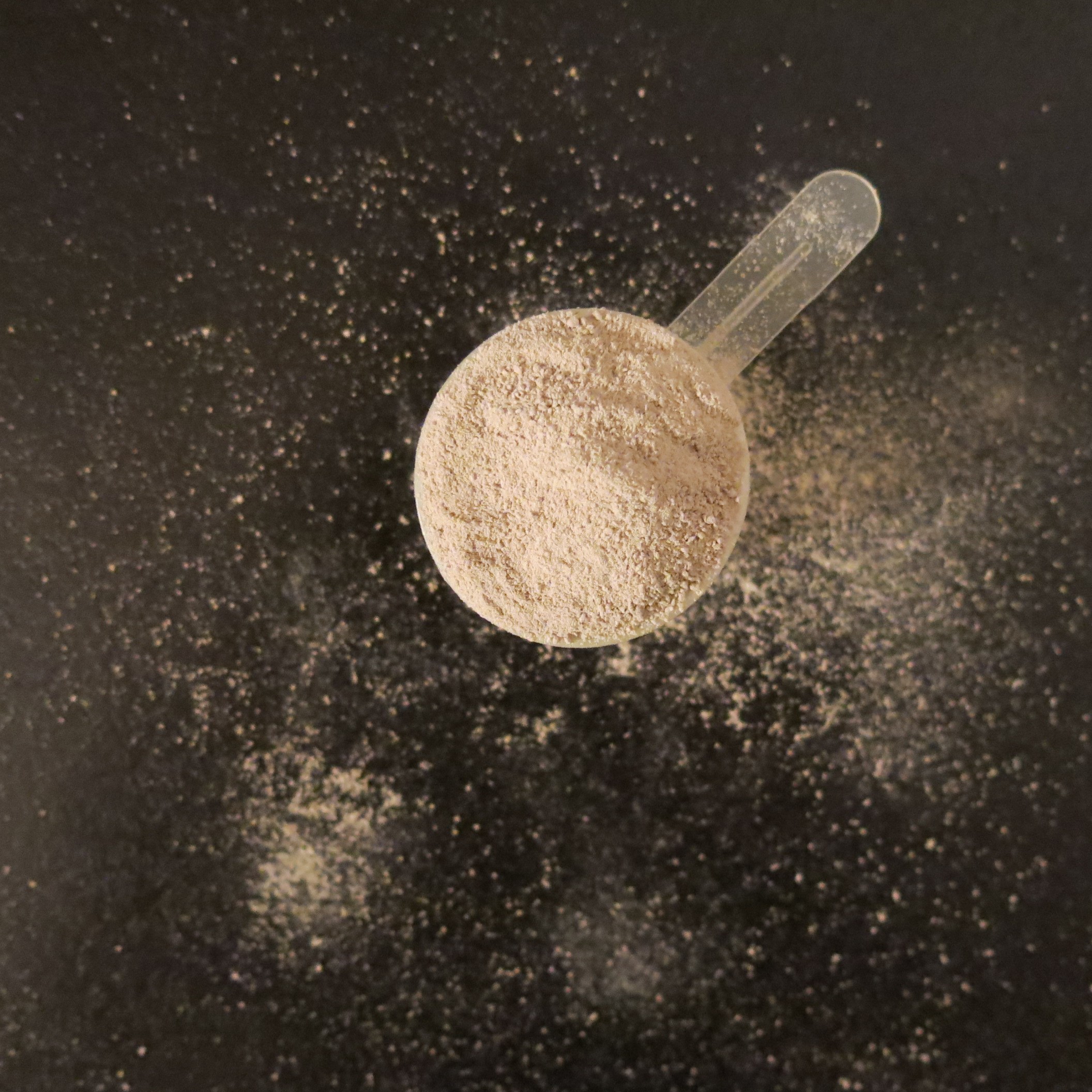
NOMY
Ingrid Dynna, Co-founder & CEO of NoMy (Norweigian Mycelium), isn’t afraid to make radical changes. Having set up the company in August 2020, in mid-2022 she decided to shift from developing biomaterials with solid-state fermentation to alternative proteins with submerged-state fermentation. “Our strategy was based on how we could have both significant market and environmental impact,” she begins.
Getting the right people in place was also key, including an internationally recognized scientist as CSO. “Bringing in Dr Jorge Ferreira was an absolute coup,” Dynna feels. “He adds a wealth of experience and leadership as we develop, scale, and bring solutions to the market.”
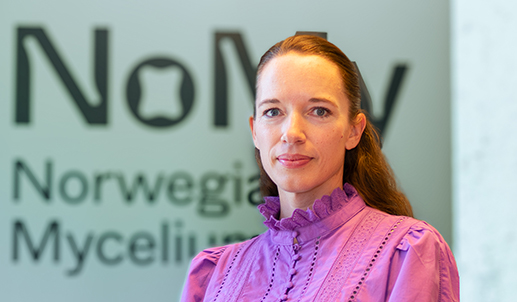
NoMy is currently building a platform to transform food and agricultural by-products into high-value ingredients using its fungal technologies. “Our approach allows us to rapidly characterize and utilize these inputs within our process,” Dynna adds. “This scenario allows us to tap into high-volume nutrients that food producers currently pay to throw away. Yet we still achieve high efficiency, quality, and consistency in our product.”
Mycelium mastery
NoMy, and indeed the use of mycelium, are at the starts of a journey, but the potential the protein offers are huge. “Our focus now is on empirical research related to the functional and nutritional performance of our mycoproteins,” Dynna reveals. “It is early days for mycoproteins as a food and feed ingredient, yet research institutes are eager to see these solutions industrialize, while feed producers are more than willing to test new ingredients.”
Dynna says that NoMy has witnessed a big push for more sustainable feed ingredients, from both the Norwegian government as well as major players in aquaculture. So, the company is still investigating the ways mycoproteins can benefit human and animal nutrition. “That makes it such an exciting ingredient to work with,” she beams. “Beyond its high digestibility as a nutritional protein source [comparable with eggs and milk], the functional properties of our mycelium-based ingredient make it what we like to call a ‘protein with benefits’.
“Research is uncovering the fact that mycelium-based ingredients can reduce cholesterol, increase microbiome diversity (due to its high fiber content) and have an immunostimulatory effect that can improve health, plus it’s better in terms of animal welfare.
Research is uncovering that mycelium-based ingredients can reduce cholesterol and increase microbiome diversity – due to its high fiber content
“Furthermore, the foaming, emulsifying, and gelling properties extend the range of applications within and beyond food and feed applications. We are just beginning to understand its potential as a nutritional and functional ingredient.”
Although right now there is somewhat of a cost barrier to market for mycoproteins compared with traditional sources, Dynna predicts that will change. “Traditional protein sources have a decades-long head start in the value chain, including development and production optimization, so it will take time to reach cost parity for any kind of novel protein source. But we’re confident we can outperform them on price in the future, as fermentation can produce proteins efficiently at a large scale, with little resources, and a small carbon footprint.
“Submerged-state fermentation [think large beer brewing tanks] have considerable scalability, translating into environmental and production cost advantages,” Dynna says. “Our production requires no arable land and can be run around the clock – independent of the weather outside or changing climate conditions. As such, we can produce healthy proteins that reduce pressure on land, and lessen the need for increased expansion of animal agriculture. And, at the same time, the use of by-products as inputs allows us to tackle a food waste, sufficiency, and sustainability problem all with one little solution.”
For Dynna and the NoMy team, it’s very much a case of tiny fungi, big impact!

ROYAL AVEBE
Royal Avebe’s flagship product, PerfectaSOL D520, is described as a ‘clean label’ texture solution for plant-based pizza cheese. It consists of PerfectaSOL S potato protein and specialty potato starches, which provide a cheese-like texture, with many of the same properties. A eureka moment for the company came when it realized that the potato protein was akin to a vegan egg.
“It gels, foams and emulsifies just like raw chicken egg white and yolk do,” suggests Jaap Harkema, Global Segment Manager at Royal Avebe. “By isolating the potato protein in a very ‘gentle’ way, without negatively impacting the solubility, we could maintain all functionality of the native protein: strong gelation upon heating, unrivalled emulsification upon a high-shear treatment, and excellent foaming upon whipping.”

Consequently, Royal Avebe can offer true vegan alternatives for not only egg proteins but also milk proteins or gelatin, with no compromise on texture.
Applications for the protein are wide. “In plant-based meat products, such as burgers and nuggets, sausages and cold cuts – or whole-muscle chicken and beef pieces – potato protein is used as a binder, to give firmness and cohesion,” Harkema reveals. “In plant-based dairy applications such as cheese, yoghurt and ice cream, potato protein enables highly stable emulsions at low use levels. And, in plant-based confectionery applications, such as meringues and marshmallows, potato protein provides the required aeration, making egg white or gelatin redundant. That’s way we call our potato protein brand ‘PerfectaSOL’ – the perfect texturizer for every desired food product.”
The Dutch company has opened a full-scale production line, completing what Harkema describes as “the transfer from ‘technology push’ to ‘market pull’”. This was “the final proof that our proprietary process to isolate native potato protein – in the form of two different, pure and high-performance fractions – delivered the right functionalities required by plant-based and gluten-free food manufacturers”.
Juice that’s worth the squeeze
The production process to separate two fractions of protein isolates in a way that maintains full solubility and functionality was anything but a straightforward process though. “Potatoes contain just 1-2% protein and, once they are ground, the starch and fibers – being insoluble in water – are separated,” he explains. “The resulting potato fruit juice, containing all soluble components including the proteins, is processed further. It is key to keep the temperature during processing below the coagulation temperature of potato protein, to ensure preservation of the solubility of the native proteins. By making use of the difference in physico-chemical properties of the protein fractions present in a potato, we can separate them as two different pure isolates.”
By isolating the potato protein in a very ‘gentle’ way, without negatively impacting the solubility, we could maintain all functionality of the native protein
Aside from the previously mentioned functional properties, Royal Avebe’s product offers a number of benefits for consumers. “Nutritionally, potato protein is a complete protein, containing all essential amino acids in sufficient quantities.”
Customer concerns should be non-existent as potato protein has been on the market since 2008 – but was relatively unknown as a source of plant-based protein. “However, we have seen a growing demand for it since plant-based foods took off, and the superiority of potatoes versus other alternatives in terms of functionality and sustainability became more known.”
Harkema says Royal Avebe is already looking to the future with excitement. “At Food Ingredients Europe in Frankfurt in late 2023, we launched PerfectaSOL S 200 and S 300, the next-generations, with improved quality and a neutral smell and taste,” he says. “These enable plant-based food manufacturers to create even better textures. Whether they want to mimic the original animal-based texture as closely as possible – or create a totally new standalone plant-based alternative that didn’t exist before – PerfectaSOL S 200 and S 300 are highly versatile building blocks to meet customers’ texture needs.”
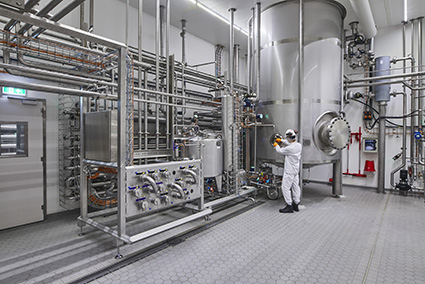
THE PROTEIN BREWERY
The big break at The Protein Brewery came with the realization that the combination of protein and fiber is a winning formula. Its fungal biomass product, ‘Fermotein’, is a plant-based complete protein produced from water-efficient and carbohydrate-rich crops, and turns a low nutritional value crop into something of high nutritional value.
“Fermotein is a whole cell bioproduct, a natural ingredient and nutrient dense,” reveals Roxanne Snijders, Brand Manager. “The protein component is of high quality with a PDCAAS score of 1, but it also includes a share of dietary fibers, including β-glucan (supporting the immune system), and chitosan (supporting healthy cholesterol levels). The neutral taste, smell and color make it easy to use without the need for undesired masking agents.

“Fermotein comes in a dry powdered form and has a very beneficial supply chain compared to other mycoprotein products, which are supplied ‘wet’ (frozen). It also extends the sensorial shelf life by reducing staling in baked goods and bar hardening in protein bars. The fibers in our ingredient also have a water-holding capacity that prevents water leaking out of the products, so it retains more moisture to keep product soft and fresh.”
Happy customers
Securing its first customer gave The Protein Brewery the impetus to move to the next level and it is now working with (and talking to) a number of potential partners around the world. “We are teaming up with Nepra Foods in the USA,” Snijders says. “They’re a market leader in CPG and ingredients, focused on plant-based and allergen-free products. And our first valued distribution partner is CK Ingredients, who are positioned on the crossroads of science and innovation in highly functional and nutritional raw materials.”
Snijders also reveals The Protein Brewery is in discussions with larger food businesses that are expressing real interest in its new ingredient platform.
“We have a lot of B2B sales and get positive feedback,” she continues. “On a sensory profile, we have a great score compared with pea and soy and, as our product doesn’t compromise performance, it’s suitable for many applications and widely embraced. To support our commercialization journey in the USA, we also have our own sensory panel doing regular testing in tasting, on quality assurance, and continuously improving our products.”
On that note, Snijders and her team recently conducted a sensory competitor analysis to confirm the taste profile comparison with other protein powders.
We have a great score compared with pea and soy and, as our product doesn’t compromise performance, it’s suitable for many different applications
The Protein Brewery is also actively working with industry partners. “Together with the Fungi Protein Association, we have a shared responsibility to stimulate consumer acceptance of fungi-based products,” Snijders says. “We also rely on governments to put in their fair share of commitment and support to bring fungi-based products to market. But, in the end, there’s only a few things that truly matter to consumers: taste, health, and price. So, we’ll be as competitive as we can by ticking all these boxes.”
Environmental impact is also a factor – and something where Fermotein excels. “The yield of fungi protein is 26 times higher than that of animal protein and four times higher than plant protein. On average, fungi-based proteins have 20 times less CO2 emissions and 20 times
less water usage than animal proteins.”
This is a big year for The Protein Brewery as it will make public the successful commissioning of its scale-up brewery with a plant opening, move its HQ, announce fresh partnerships, and even reveal a new product in the range!
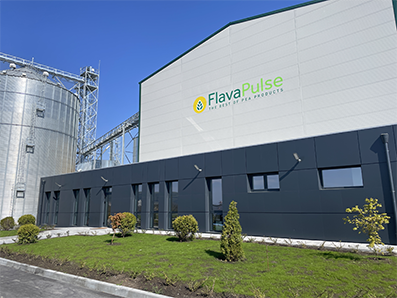
FLAVAPULSE
Coming from the world of commodities trading, FlavaPulse has extensive knowledge of the agricultural world – from the production of grain to its transportation, shipping and storage. The plan for positioning itself in the food chain was set up in 2019 and the company soon realized the potential of yellow pea as a sustainable and climate-friendly source of protein.
“Through extensive R&D, we discovered that yellow peas not only have a high protein content but also require less water and produce fewer GHGs compared to other protein crops,” explains Cyril Francart, CEO. “That led us to completely shift our focus and invest in developing a processing technology that would allow us to extract pea protein concentrates from yellow peas in the most efficient and environmentally friendly way possible.”

The sustainable aspect of the production process is a key factor in its success and appeal, believes Francart. “Not only do we produce while consuming less energy than the traditional market players, we offer concentrates up to 15% richer in protein. More importantly, we address the major drawback of the raw material (peas), which is that bitterness of the native products. We offer a ‘clean-taste’ solution while preserving the native properties of our products.”
Perfect partners
Working with IMPROVE, an R&D and technological partner, has also helped FlavaPulse get to its current position. “IMPROVE, which specializes in alternative proteins extraction and characterization, not only helps us to develop our process but we also collaborate in the development of foods using our ingredients, such as alternatives to burgers and dairy.”
Francart says the potential in pea proteins is huge – and is aided by a growing acceptance from consumers, many of whom are looking for a replacement for soy-based or wheat-based proteins. “This has been documented by numerous publicly available studies,” he reports. “Therefore, the desire to consume more peas – a natural, nutritious, gluten-free, low allergenic source of protein, to the detriment of soy and wheat – is a clear and well-known market trend.”
According to Francart, there are four major environmental benefits to the production of yellow pea, compared with traditional protein sources. “Firstly, while soybeans and wheat require large amounts of water for irrigation, yellow peas are relatively drought-tolerant and can thrive with less water. This makes pea protein a more water-efficient option.
“Secondly,” he adds, ”pea protein production typically has a smaller land footprint compared to soy and wheat protein production. Yellow peas can also be grown in a variety of climates.
“Pea protein production also generally has a lower carbon footprint compared to soy and wheat. Yellow peas have a lower greenhouse gas emission profile compared to soybeans and wheat and are nitrogen-fixing crops, so capture nitrogen from the air and reduce the need for synthetic nitrogen fertilizers.”
We offer a ‘clean-taste’ solution that reduces the bitterness of the final product, while preserving the native properties
of our products
Finally, Francart maintains that the manufacturing processes also have a positive impact on the environment. “Pea protein concentrate is typically produced using a dry processing method, which involves mechanically separating the protein from the yellow peas. This does not involve the use of water or any wet milling,” he explains. “Soy, pea, or wheat isolates are often produced using a wet milling process. This involves soaking the raw material in water to extract the protein. The mixture is then separated, and the protein is further processed and concentrated. Finally, the protein is spray-dried to remove the remaining moisture to create a powder.”
FlavaPulse has recently released ‘Clean Taste’ products that are based on a patented innovative technology. “This,” Francart confirms, “is an innovative pea protein concentrate with higher protein content and reduced bitter taste.”
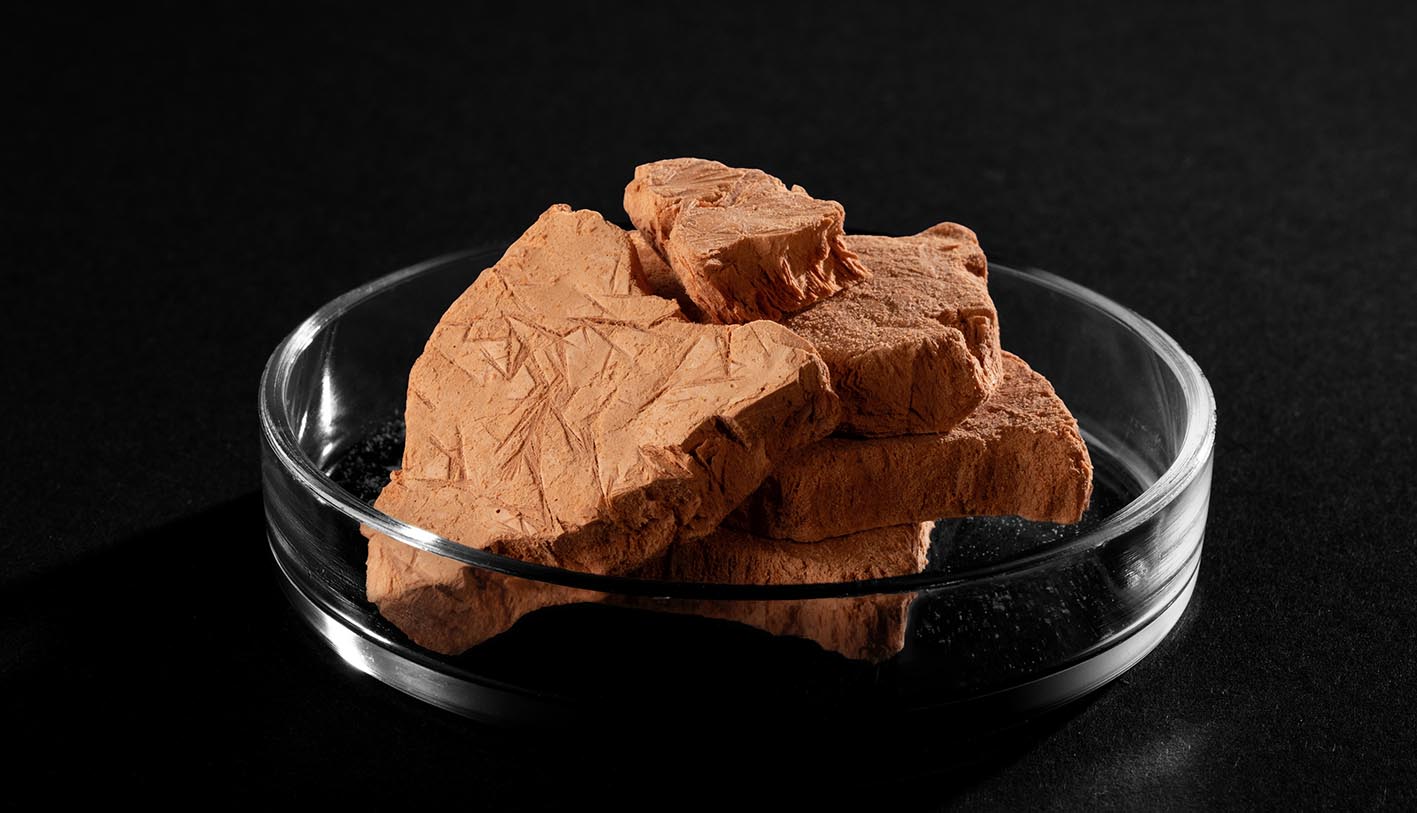
AIO.BIO
Nemailla Bonturi and Petri-Jaan Lahtvee, the co-founders of ÄIO.bio, both started out as university researchers but have been working on the development of their protein solution for a decade. The Estonian startup really took off in late 2022 when it received funding from the Estonian Business and Innovation Agency to invest in people and equipment – and it is has grown from there.
“We are producing replacements for animal fats and palm oil by upcycling residues and side streams from agriculture and industry,” reveals Bonturi. “We use a yeast fermentation process and, therefore, we can produce alternatives that are healthier, more time-efficient, and sustainable. Not only that, the process uses much fewer resources (such as water and land) when compared with agriculture and animal farming.”
The specific strain being used in the yeast is a non-conventional one called Rhodotorula toruloides, which is produced in a similar way to brewing beer. “In a bioreactor, you add the substrate, water and salts, then adjust the conditions for the growth,” Bonturi says. “Once you add a tiny amount of yeast fresh culture, it will do all the work for you and grow and produce fats and oils. Our strain is very robust and efficient, enabling carbon to be converted into lipids and antioxidants.”
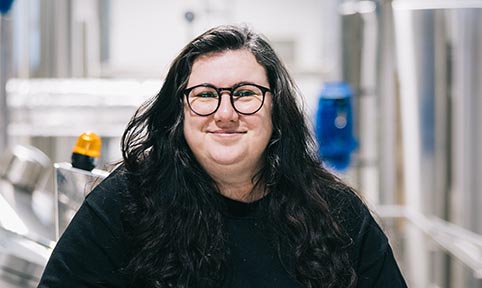
Put to the test
So far, the company has completed tests for a wide range of foods in which the ingredient can be used, including patties, sausages, ham, cookies, and even dog biscuits! “The feedback being given is very positive so far,” Bonturi reports. “Our ingredients have been evaluated as giving extra ‘umami-ness’ and less bitterness, as well as providing an interesting coloration for meat alternatives. In addition, the products are rich in antioxidants, have Omega-3, and no trans fats. We have initial indications that there is the possibility of further nutritional benefits, but such claims can only be made after we prove it through different studies.”
As Bonturi mentioned, the production process is similar to that of a brewery, so the by-products are also similar, such as spent yeast. “This yeast can be sold for animal feed, while the leftover broth goes to wastewater treatment,” she confirms. “For all the matrices tested, the integration of the yeast ingredient was rather easy, but quantity adjustment and optimization is required from formulation to formulation.”
Our ingredients have been evaluated as giving extra ‘umami-ness’ and less bitterness, as well as providing an interesting coloration for meat alternatives
Based on initial calculations, the business is aiming for its encapsulated oil to be price competitive to palm oil, when at full-scale production (and depending on the substrate). “Oil and butter will be cheaper than coconut oil and we are currently performing the pre-engineering for the construction of our demo facility,” Bonturi adds.
More calculations have been made around the environmental impact of the yeast protein, which are initially encouraging. “Our data shows that, with our technology, it is possible to mitigate CO2 (overall, at least) and use 70% less land and 10 times less water in the production process compared with traditional sources.”
ÄIO turned two years’ old on 17 January 2024, and now has its first batches prepared for an EU novel food permit. “The first life-cycle assessment of our products have been done, with the results to come in early 2024, and we have progressed with the pre-engineering of our pilot plant,” Bonturi reveals.
Further funding rounds are also planned to continue growing the business.
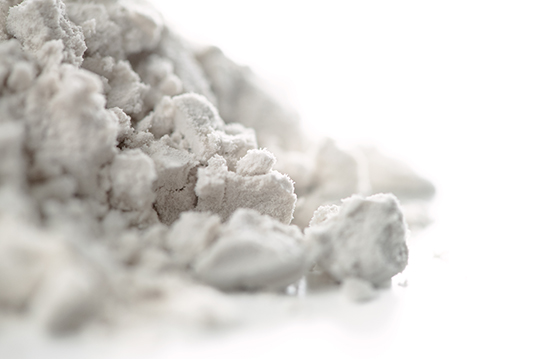
COSUN
Unsurprisingly, Thijs Bosch, Director of Cosun Protein, believes the company’s Tendra fava bean protein isolate stands out from other proteins in terms of taste and functionality.
“The innovative part of the production process is our extremely mild protein extraction process, which leaves the protein in its natural state,” Bosch reveals. “This ensures a neutral taste and excellent solubility. Our application team works closely together with food manufacturers developing next-generation plant-based products such as dairy alternatives and those for sports nutrition. With researchers, we further deepen our knowledge about plant proteins to enable new innovations in processing and protein application.

“Our beans are locally grown in the Netherlands and Germany and, following harvest, are de-hulled and processed into splits or flour,” he adds.
The Tendra protein isolate has very strong emulsification properties and can be used to replace milk and egg yolk in current animal-based products. Resulting from its very mild taste profile, it can be applied very broadly in plant-based products. “It can replace milk in ice cream, yoghurt and cream cheese very efficiently,” he says. “It is also possible to make hard vegan cheese with a high protein content, where Tendra is one of the key texturizing ingredients.”
Fava beans also have sustainability on their side. “It is one of the most sustainable crops around,” Bosch adds. “It has low water use, CO2 production, and land use. Furthermore, it fixates nitrogen in the soil while growing, enabling the farmer to halve the use of fertilizers being applied.
“Protein concentrates and isolates from fava bean are gaining interest in the market, and volumes are increasing,” Bosch notes. “For example, in the Netherlands, the area of fava beans has been doubling over the past few years.”
Cost factors
The taste aspect is an important one, adds Bosch, because it is something that is lacking in plant proteins. He believes the Tendra protein provides a real solution. However, other elements are a bit more complicated, such as the cost comparisons with animal proteins. “It depends upon which protein source you compare it, and the functionality that the protein delivers,” he reasons. “Overall, we believe we can be at cost parity with dairy proteins, or even more competitive on a cost-in-use basis. If the real cost of the CO2 impact of animal-based proteins is taken into account in the pricing, the difference would be even bigger.”
Our fava beans are locally grown in the Netherlands and Germany and, after harvest, they are de-hulled and processed into splits or flour that is used in our production process
There are also sustainability benefits. “The impact on the environment is dramatically reduced compared to animal-based proteins,” Bosch says. “For example, the CO2 production/kg of protein for producing fava beans is 50 times lower than for beef and 10 times lower compared with milk. In the area of water use, the difference is even bigger: more than 20 times for chicken and 75 times for beef compared to fava beans.”
Next for the Tendra brand is the launch of ingredients in active nutrition applications, such as ready-to-mix powders and bars. “Our protein performs very well in these applications due to that neutral taste, solubility and dispersibility,” Bosch says. “We are also looking into new formulations that combine the functionality of Tendra with the prebiotic fibers from our sister company, Sensus.”
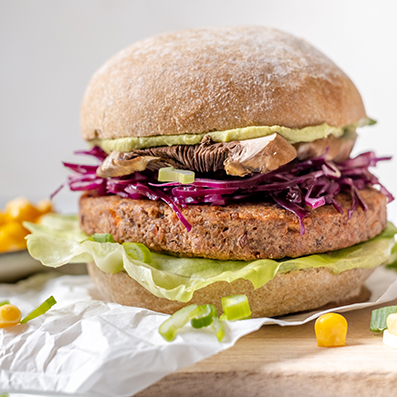
FABAS
According to its website, Fabas is ‘a diverse bunch with one mission: to produce good food from local and plant-based raw materials’. Based in Switzerland, the ingredient specialist is very much focused on keeping things local, and uses the finest Swiss legumes to ensure its products are high in protein as well as being a healthy option for all. As such, it works very closely with farmers in its home territory to establish the cultivation of chickpeas, which it sees as having huge potential as an important ingredient for a plant-based future. With a farm-to-fork approach, Fabas is committed to overseeing a protein transition (and possibly revolution)
within Switzerland – and beyond.
“We’ve perfected our production process in both the lab and also in the pilot plant, and have recently completed the first zero batch test at an industrial scale,” reveals Anik Thaler, Founder. With a lot of the hard work already done, she adds that there are also firm plans for the coming months and years. “A future key milestone will be our market entry planned for mid-2024, and we are also looking forward to the first sales of our product, a protein-rich pea-based ingredient called the ‘Booster’.”

There are a range of plant-based products that could be transformed with ingredients from Fabas. Meat substitutes include chicken, burgers, and sausages, but also dairy alternatives such as yoghurts, cheese, and desserts.
Thaler explains that Fabas combines a novel extraction method with fermentation for its pea protein production. “With this process, we can offer a protein preparation that is not only highly functional (due to the special extraction method), but also very pleasing in taste (thanks to the fermentation step).
“As our extraction process is very mild and allows for the extraction of the complete protein fraction (hence no protein lost in a side stream), we can offer a better amino acid profile compared to other products on the market.”
Home run?
With the female-run company in its infancy, Fabas is looking to willing partners globally to help it fulfil its potential. “With the financial support of the Innosuisse (the Swiss Innovation Agency promoting science-based innovation) we collaborate closely with the University of Applied Sciences in Sion,” Thaler adds. “Proximity to industry is very important to us, which is why we have collaborated with two strong industry partners – Emmi for dairy alternatives and Hilcona for meat alternatives.” These two companies have been onboard since the company was founded in 2020, Thaler notes.
Our protein is highly functional, hence suitable for high-quality applications in meat and dairy alternatives
From a cost perspective, the founder says that she compares the Booster product to commonly used protein isolates, because that is the level Fabas is looking to compete with.
“Our protein is highly functional, hence suitable for high-quality applications,” she furthers. “Our mild extraction process and use of fermentation allows us to preserve the natural functionality of the pea, while offering a neutral taste and color. With peas, this combination is usually a challenge as they tend to come with bitter off-flavors.”
Thaler also maintains that the production process is a lot leaner and shorter than traditional protein sources, allowing it to save water, energy and – as a result – reduce CO2 emissions by around 60% per kilo of protein, compared with competitors. “We are currently working on quantifying the positive impact that our product will have for customers in the industry even more precisely,” she confirms.
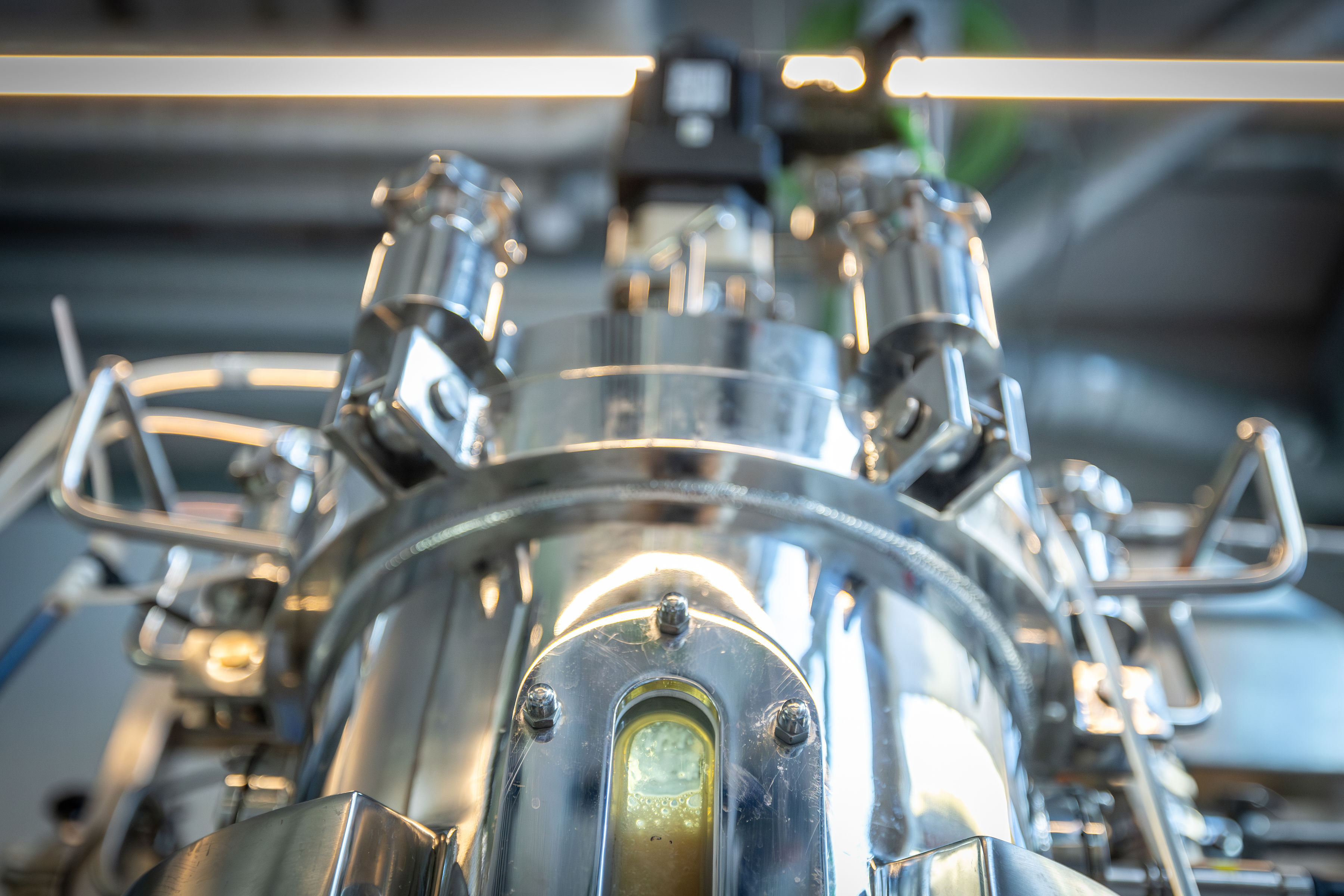
MICRO HARVEST
As Luisa Cruz, Co-founder & CTO of MicroHarvest, reveals, the company was born out of the realization of how pressing the problem of sourcing sustainable protein really is today. “My co-founder, Katelijne Bekers, and I were both working in the B2B ingredients space, and a few trends were apparent when we started MicroHarvest,” she explains. “Protein demand increasing, damaging the planet to satisfy demand, supply stability, and the quality of protein ingredients were all concerns.”
Today, she insists, there aren’t any solutions for sustainable protein that can be scaled outside of the commercially available plant-based ingredients, which are themselves burdened with challenges linked to performance and sustainability.
“While talking about these issues with friends in biotech, we realized a solution was right in front of us: bacteria can grow fast in bioreactors that exist and work at scale today and, if you pick the right ones, they can be incredibly efficient and contain lots of protein,” Cruz recalls. “So we started MicroHarvest to feed the world sustainably and drive impact.”
To produce single-cell proteins (SCPs), Cruz starts with strains of microorganisms selected from natural environments. “We use agricultural sidestreams as feed-stock, meaning our microorganisms grow in media rich in natural components. The next step is the magical part: biomass fermentation is key to unlocking the growth of our microbial miracle workers.”
%20Lui%CC%81sa%20Cruz%2C%20Katelijne%20Bekers%20and%20Jonathan%20Roberz.jpeg)
Fermentation enables fast exponential growth and production of biomass in a short amount of time. The cells are then harvested and, if the product requires it, the team selectively breaks down the biomass to release its internal nutrients. The last step is water removal, to deliver the product in its most shelf-stable form.
“We have screened a variety of sidestreams such as molasses from sugar factories, byproducts from dairy, and starch-rich streams,” adds Cruz. “The actual choice of main substrate can be made according to local availability.”
Coming soon…
MicroHarvest has recently unveiled its pilot plant, and announced a partnership for industrial production to launch its first product. “This means we will be able to launch a commercial product in the coming months, in record speed for a biotech company,” Cruz reports. “In parallel, our own pilot plant will enable us to proceed at speed with our product development efforts for other segments, as well as to produce samples for customer testing.”
Whatever the level of production capacity, Cruz confirms there are huge environmental benefits to be had from single-cell proteins, compared with traditional approaches. “Today, we are able to produce one ton of product a day,” she reports. “Producing the same amount of protein rearing cows would emit 30 times as much CO2, according to preliminary studies with our partner at the Nova Institute of Technology. We know beef is a polluter, but MicroHarvest also performs well next to protein sources vastly utilized as substitutes today.”
Bacteria can grow fast in bioreactors that exist and work at scale today and – if you pick the right ones – they can be incredibly efficient and contain lots of protein
Away from meat, there are benefits to be had in aquaculture, too. “At our current production rate, we could replace 280 million sardines dedicated to fish meal in one year,” Cruz reveals. “We need to think beyond GHGs. Using our product to feed fish can positively impact other environmental factors, such as preventing negative effects on biodiversity.”
In protein diversification, maximizing sustainability might be enough for some in the ingredients sector, but Cruz is aiming to go further. “We know B2B clients rely on solutions that are scalable and offer highly consistent quality – two areas where we know we can compete, combining our technology with the natural potential of the microorganisms we select,” she says. “What’s more, our technology enables us to leverage existing infrastructure rather than custom-build facilities. This is why we are one of the first SCP players to go to market in a few months, having already secured a co-manufacturing partner.
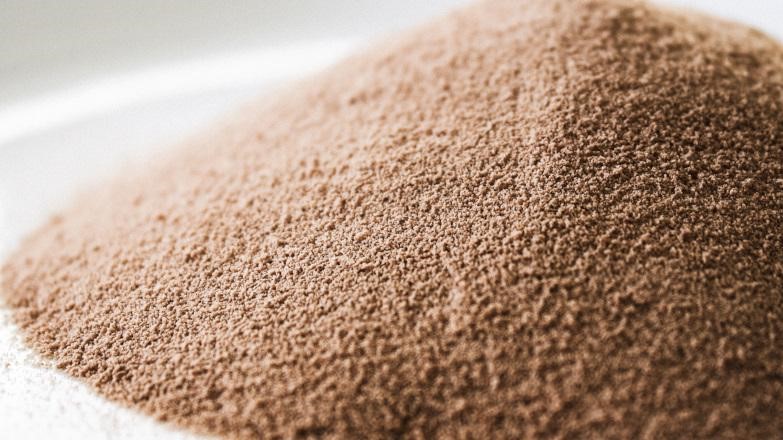
UNIBIO
Technology can propel a business to another level if used effectively. In the case of Unibio, that was the development of its vertical U-Loop fermenter, which enabled Methylococcus capsulatus to grow effectively enough to yield proteins. “This enabled us to create ‘Uniprotein’,” reports Jess Dragheim, CTO. “This occurred at a pilot scale in 2011 but we now operate at an industrial scale with Uniprotein being sold commercially.

“In lakes, methane is released from the decomposition of organic matter,” Dragheim goes on to explain. “The microbes that live in these lakes have adapted to convert carbon from methane into protein. These high-protein microbes are then, in turn, eaten by fish.”
A single-cell protein, Uniprotein is initially being used in animal feed, but is also in the process of being approved for human consumption. In terms of resources, 2m3 of methane from any source is enough to produce 1kg of Uniprotein. “It has a protein content exceeding 70%, and includes all the essential amino acids as conventional fishmeal,” reveals Dragheim. “It is also a rich source of minerals and vitamins, among which zinc and B12 are also deficient in plant-based meat substitutes.”
Planet-friendly proteins
There are also environmental advantages around the use (or not) of water and land with the production of Uniprotein. “A portion of the water used can be efficiently recirculated within the process, contributing to better resource efficiency,” Dragheim confirms. “Essentially, 10,000 times the amount of protein is produced on the same amount of land as soy, with around 50% less water.”
When it comes to innovation, Dragheim points to a number of examples that Uniprotein offers. “The methane-based fermentation represents a novel approach to producing protein and removes the reliance on traditional agriculture processes,” he explains. “Protein produced in this way can be considered an alternative and sustainable source of protein, especially when compared to conventional sources such as soy, pea, or animal-based proteins.
“Furthermore, unlike traditional agriculture – which is often seasonal and weather-dependent – bacterial fermentation can provide consistent and year-round production of protein,” says Dragheim. “This scenario can enhance the reliability of the protein supply chain and detach it from the impact of climate change to help improve food security.”
He also points to a reduction of environmental impact, diversification of protein sources, and the potential for a high protein yield as other major plusses.
A lot of the current work at Unibio is based around getting Uniprotein approved for human consumption, which means looking at nutritional value, work around taste and texture, attaining certifications and quality standards, and reinforcing sustainability messaging.
Uniprotein is also a rich source of minerals and vitamins, among which zinc and B12 are also deficient in plant-based meat substitutes
Addressing potential consumer concerns is also a priority. “Collaborating with nutritionists, chefs and other industry experts to endorse and promote our product is vital,” Dragheim says. “Their support can lend credibility and address any consumer skepticism.”
Unibio is also big on transparency and education. “We provide educational materials, both online and offline, to help consumers understand the environmental and nutritional benefits compared to traditional protein sources,” he adds.
Unibio has adopted a flexible approach to production, so is ready for expansion when required. “We have already scaled production to industrial scale (thousands of tons),” says Dragheim. “This can easily be expanded as the technology is based on modules so you simply add another module if you want to produce more ingredients. We will continue to expand production with partners in various geographies around the world and have an active pipeline in that regard.”
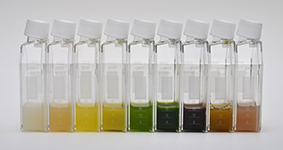
PHYCOM
With food quality diminishing in past decades, leading to health risks and conditions such as obesity, Phycom was founded on the notion that the world needs more – and healthier – foods. The term ‘algae’ can conjure up all manner of images in the context of food. “But it was the future-proof food we saw to address these issues,” reveals Anneke Roes, Brand Manager. The challenge was to prove the process scalability of our in-house developed, fully enclosed bioreactors, including proof of genome-sequenced algae strains.”

Having managed to cultivate multiple algae strains and colors simultaneously, since 2019 Phycom has operated a full-scale facility. It’s here that controlled algae cultivation is possible, something that has been of interest for many years. “The challenge was reaching large-scale cultivation and meeting industry needs,” Roes adds. “From its start, Phycom has worked on four pillars: quality of available food; volume; economies of scale; and sustainability (QVES). Our production facilities meet all four, making our algae (and its isolates) the true future food.”
In terms of quality, the certified closed production system contains only single-strand purified cultures, hence is food grade. As they are genome sequenced, genuine algae strain cultivation is possible. When it comes to volume, Roes recognizes that, on all continents, we need enough food to feed all mouths. “That is why the Phycom locations have a large-scale setup,” she says. “The capacity of our facilities is currently 500 tons a year for each plant. We have the ambition and envisaged improvements that will result in a yearly presumed maximum of 1,700 tons output of dry algae biomass per location.”
An ingredient for all seasons
As an algae creator, Phycom currently operates two full-scale production facilities, which offer benefits in terms of economies of scale. “These originate from in-house developed biological advances and continuous process innovations,” Roes continues. “Above all, the closed system is season-independent and climatic-condition autonomous, securing a 24/7 year-round process.”
Finally, Phycom’s microalgae strongly impacts food production and consumption sustainability. “Analysis of our processes show that the Phycom processes link to
six SDGs as set out by the UN,” Roes says. “An example of our approach is re-using the downstream water flow, which safeguards water. We also prevent land depletion and the transformation of terrestrial ecosystems as the facilities do not use fertile land.”
The nutritional benefits associated with algae varies between food segments but, in general, Roes says that aside from protein, algae contains macro- and micro-nutrients such as fibers, vitamins, minerals, and antioxidants. “By adding algae, the nutritional score can be increased by only adding 5% of algae powder to a recipe,” she suggests.
From its start, Phycom has worked on four pillars: quality of available food; volume; economies of scale; and sustainability
Not wishing to stand still in a fast-moving industry, Roes says Phycom is moving forward with the development of a process to isolate the protein from different algae species. “The isolate product is not yet commercially available, however the whole range of algae products – including its protein range of 35-45% – are,” she says. “One of our launch customers is Koppert Cress, which markets three algae products for use by chefs as natural flavor enhancers.”
Meanwhile, Phycom has been working on a technique to break down the algae into constituents. “We want to separate the contents into fractions rich in protein, fatty acids, antioxidants or fiber. This will be further developed in the coming years.”
If you have any questions or would like to get in touch with us, please email info@futureofproteinproduction.com







